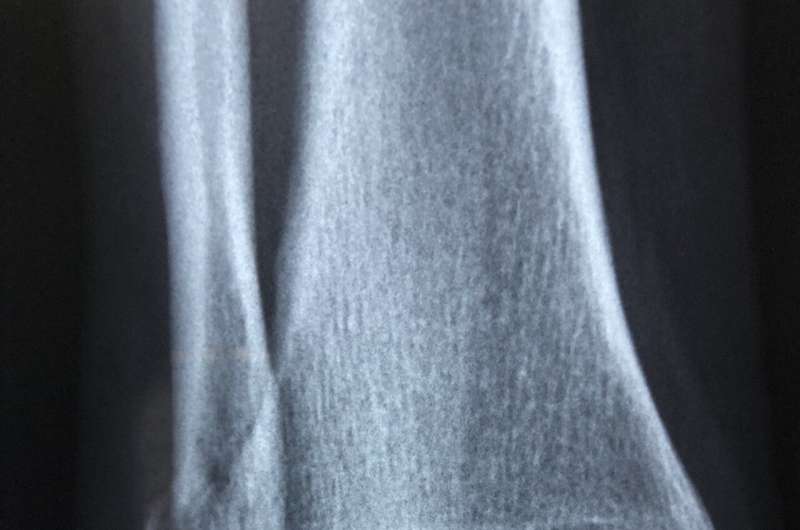This article has been reviewed according to Science X's editorial process and policies. Editors have highlighted the following attributes while ensuring the content's credibility:
fact-checked
trusted source
proofread
New technologies aid in accurately identifying bone fragility

Dual energy X-ray absorptiometry (DXA) is the gold standard for assessing bone mass and evaluating fracture risk. But new technologies shed light on knowledge gaps not filled by DXA alone and sometimes suggest the need for additional procedures to accurately assess bone health. A presentation at the 2023 Annual Meeting of The Menopause Society in Philadelphia September 27–30 focuses on the evolution of technology to better diagnose bone fragility.
The discussion of bone health is especially relevant for postmenopausal women who are more vulnerable to osteoporosis and osteopenia because of declining estrogen levels that occur during the menopause transition. Measurement of bone mineral density by DXA is the predominant means for identifying if a woman is predisposed to fragility fractures. That's because the majority of the bone's strength, 60-75%, is accounted for by bone mass.
But bone mass alone doesn't tell the entire story as to the strength of a woman's bones and her risk for fractures. At the 2023 Annual Meeting of The Menopause Society, Dr. Marcella Walker from Columbia University's Division of Endocrinology leads a discussion focused on newer non- or minimally invasive technologies that are yielding additional information beyond bone mineral density to provide a fuller picture of a patient's overall bone health.
Assessment advances include the trabecular bone score (TBS), which is an indirect measure of spine trabecular microarchitecture obtained from the DXA image to predict fracture risk independently of, but in conjunction with, BMD. Vertebral fracture assessment (VFA), also performed on a densitometer, can detect vertebral fractures, many of which go undetected.
In the past two years, the FDA also approved impact microindentation (IMI), which measures the distance a probe extends into the tibial bone cortex, thereby effectively measuring bone material strength. It correlates with the bone's ability to resist the development of cracks and is performed using a minimally invasive, hand-held device.
According to Dr. Walker, there is so much exciting technology becoming available that can tell us a lot about a bone's strength. While she believes there is tremendous value in utilizing several measurements of bone quality in some patients, she cautions that many women are not receiving the minimal screening for osteoporosis with bone mineral density measurement by DXA.
"It is important for both clinicians and patients to understand that osteoporosis doesn't cause any symptoms until a fracture occurs. That is why it is so essential for women at risk to have bone mineral density measured by DXA. Adjunctive technologies, such as TBS and VFA, are particularly helpful to further risk stratify women close to the therapeutic intervention threshold where this information might change a decision to start treatment," says Dr. Walker.
"This presentation should provide valuable insights about the various technologies available to health care professionals in order to get a more accurate picture of their patients' risk for fracture" says Dr. Stephanie Faubion, medical director for The Menopause Society. "Bone health and avoiding fractures is such an important issue for women at midlife."


















